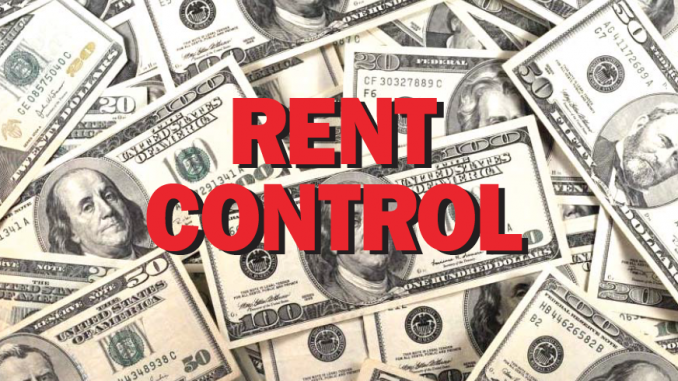
BY ALLISON LEVITSKY
Daily Post Staff Writer
Measure V Too Costly, a landlord-funded campaign seeking to effectively end Mountain View’s two-year-old rent control program, submitted petitions to City Clerk Lisa Natusch yesterday to qualify for the 2020 ballot, according to Mayor Lenny Siegel.
The campaign originally sought to get on next month’s ballot, but didn’t collect the minimum 5,126 valid signatures by the July deadline.
Petitioners had until this month to finish collecting signatures for the 2020 ballot in order to avoid having to start from zero.
In April, Siegel labeled the initiative a “sneaky repeal” when he noticed that the fine print suspends rent control anytime the city’s vacancy rates goes above 3%.
That means the California Apartment Association-funded initiative would effectively elminate rent control because vacancy rates in Mountain View have rarely fallen below 3%. Since 2009, vacancy rates have hovered between 3.9% in 2011 and 5.8% in 2016.
Other parts of the initiative were meant to attract votes, Siegel said, by promising to limit rental protections to families earning less than the median household income and ensuring that the $2.6 million organization that runs the rent control program doesn’t access general funds without City Council approval.
In reality, the Rental Housing Committee is financed entirely by rental units. Landlords pay $155 per year and committee members aren’t paid a salary.
Representatives of Measure V Too Costly didn’t return a request for comment.




VACANCY TAX: BETTER THAN RENT CONTROL
Rent control doesn’t force owners to offer their properties “to let” at the allowed rent. Rent control doesn’t force land owners to build more housing. On the contrary, it discourages both, reducing the supply of housing and RAISING other rents. Exempting NEW buildings from rent control may avoid deterring construction, but it still doesn’t open up EXISTING buildings for tenants. Worse, it means that the stock of rent-controlled housing becomes a shrinking fraction of the whole housing stock — unless the exemption is only for a limited time, in which case you’re discouraging construction again!
Will removing regulatory barriers to construction solve the problem? Not by itself, although it’s obviously a necessary condition. Cheaper housing requires developers, builders, and owners to increase supply to a point where it reduces their return on investment. They obviously won’t do that voluntarily. They will do it only if they are penalized for NOT doing it.
SOLUTION: Put a punitive tax on vacant lots and unoccupied housing, so that the owners can’t afford NOT to build housing and seek tenants. By reducing the owners’ ability to tolerate vacancies, a vacancy tax strengthens the bargaining position of tenants and therefore reduces rents. It yields both an *immediate* benefit, by pushing existing dwellings onto the rental market, and a *long-term* benefit, by encouraging construction.
Such a tax, by reducing the cost of housing, would make it easier for employers to pay workers enough to live on. A similar tax on commercial property would reduce rents for job-creating enterprises. That’s GOOD FOR BUSINESS and GOOD FOR WORKERS.
A vacancy tax is also GOOD FOR REALTORS because they get more rental-management fees for properties coming onto the rental market, plus commissions from any owners who decided to sell vacant properties to owner-occupants (who of course don’t pay the tax).
Best of all, the need to avoid the vacancy tax would initiate economic activity, which would expand the bases of other taxes, allowing their rates to be reduced, so that the rest of the city/state/country gets a tax cut!